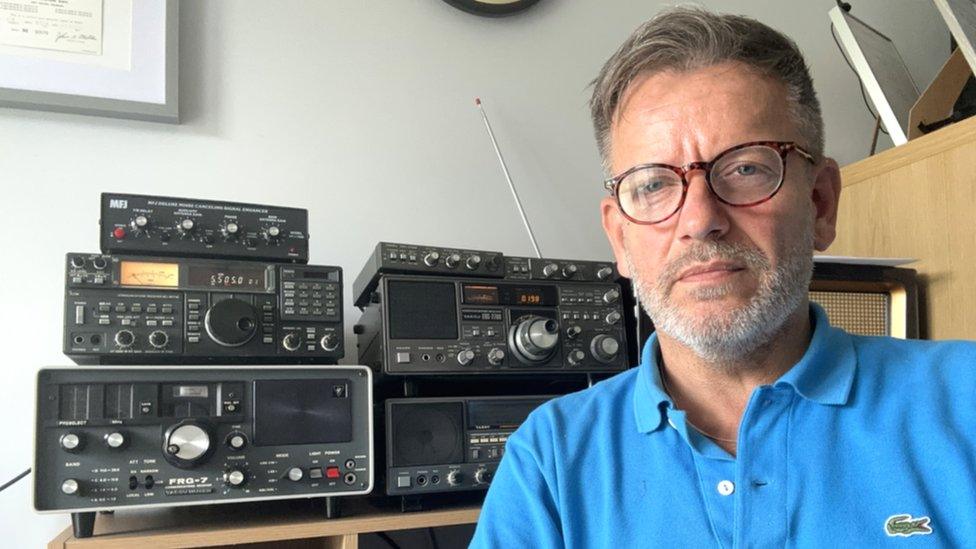How voices travelled the world from a hill in the Midlands
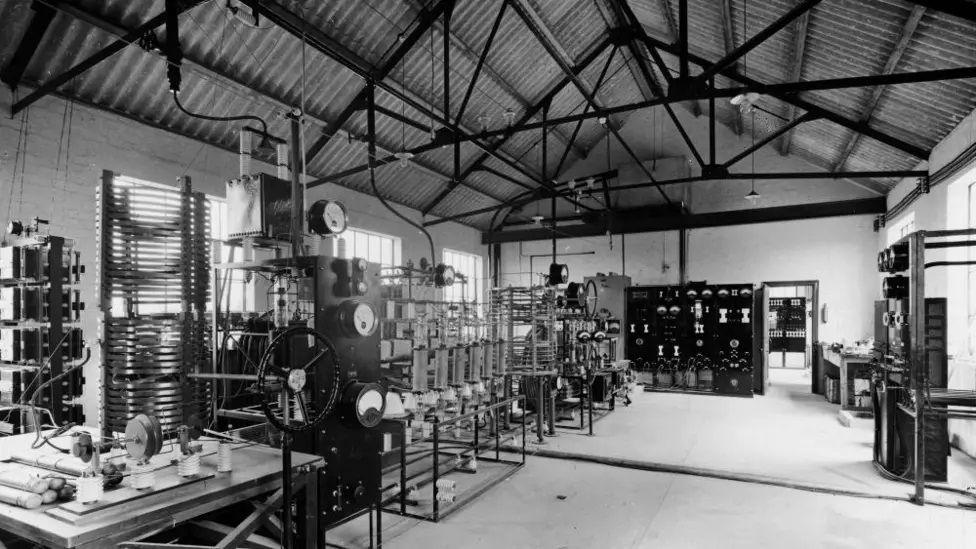
The 5XX building housed the first BBC transmitter on Borough Hill
- Published
This year marks the centenary of the opening of the BBC transmitting station at Daventry in Northamptonshire.
It carried the BBC World Service to countries across the world from 1932 to 1992 and was also the site of the world's first national radio transmitter.
So how did this small town in the Midlands become a famous name across the globe?
Why was Daventry chosen as a transmitter site?
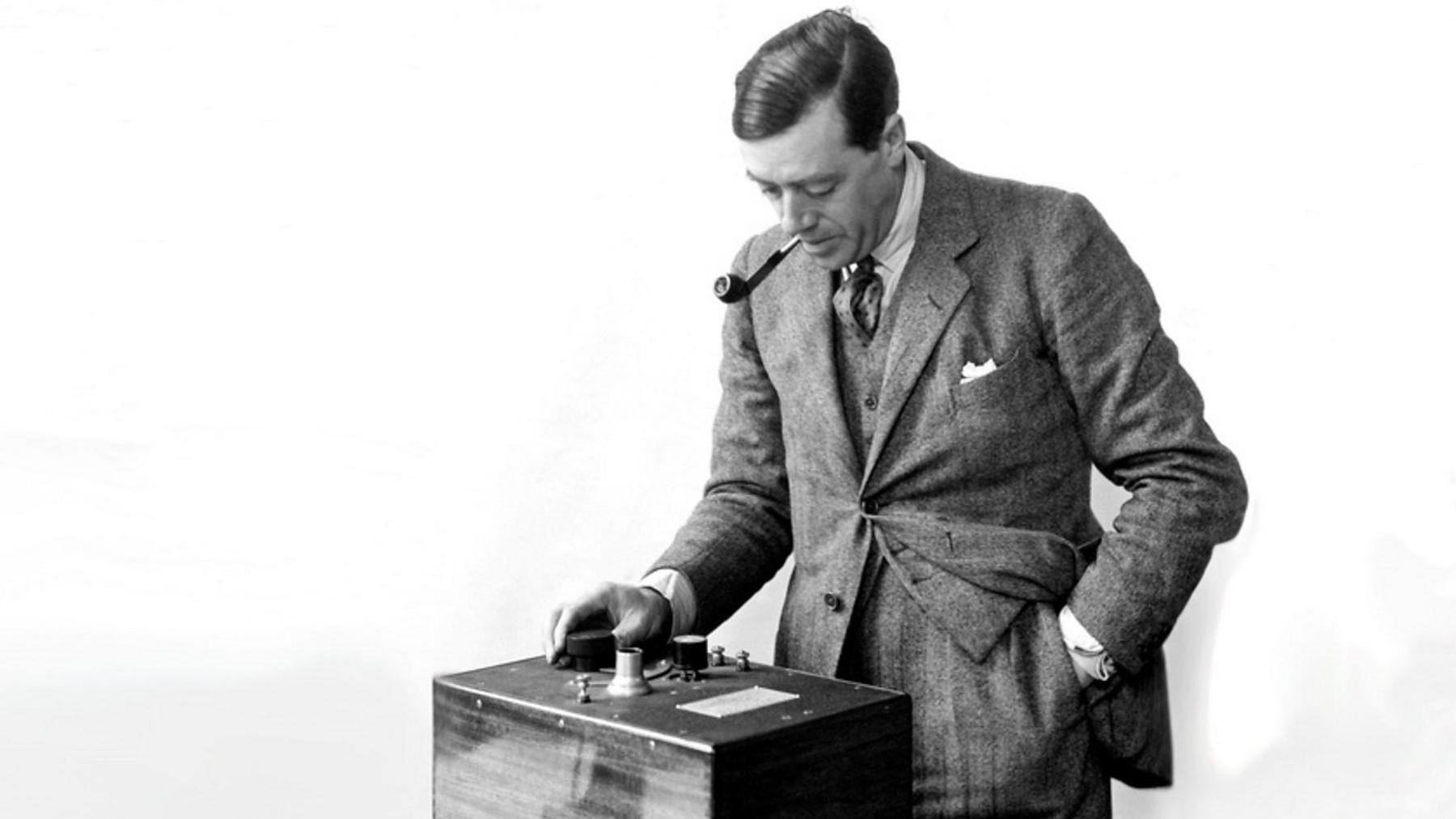
Capt Peter Eckersley, the BBC's chief engineer, believed it was possible to broadcast to most of the country from one site
When the BBC sprang into life in 1922, radio broadcasts could only be made over short distances.
The company's chief engineer, Peter Eckersley, believed it was possible to create a long wave transmitter that would serve most of the country.
The BBC decided to find a site for a transmitting station that was situated north of a line between the Severn and the Wash, surrounded by as much land as possible.
Six locations were explored and Borough Hill in Daventry turned out to have the best coverage of land.
The BBC bought 58 acres (23 hectares) of the hill and started work on constructing the station. There was no road to the top, so it built a rack and pinion railway to haul building materials up the slope.
Two 128m (420ft) masts were erected with a lattice of copper wires and aluminium hoops.
The transmission equipment was housed in a spacious hall with cathedral windows in what became known as the 5XX building, external.
What was the first radio service to be broadcast from Daventry?
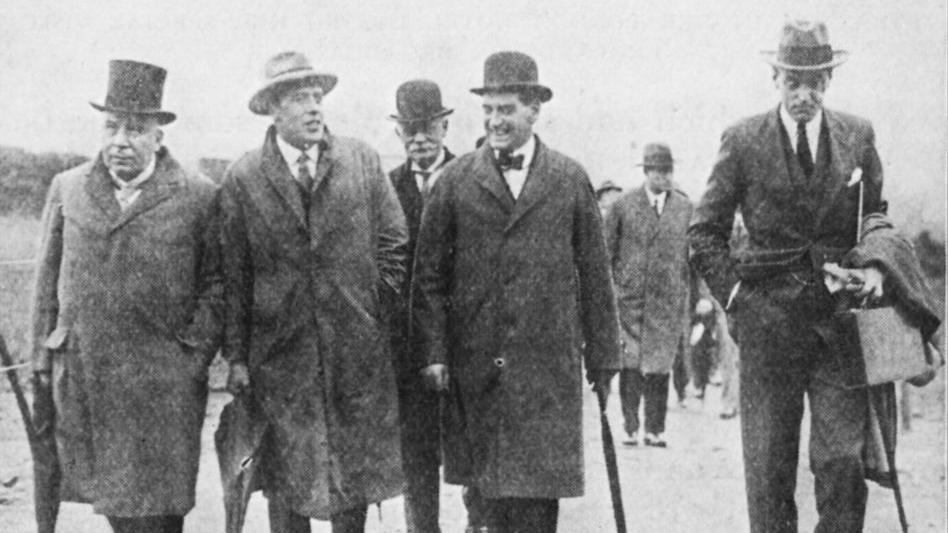
Lord Reith (furthest right) and the BBC's chief engineer, Peter Eckersley (second left) arrive for the opening of the Daventry station in 1922
The station opened on 27 July 1925, with a poem called The Dane Tree, external written by the-then poet laureate, Alfred Noyes.
The first broadcasts, for the BBC's National Programme, mainly originated in London and included plays, like The Glittering Gate, the story of two dead burglars.
There was also music, including popular songs and orchestral items.
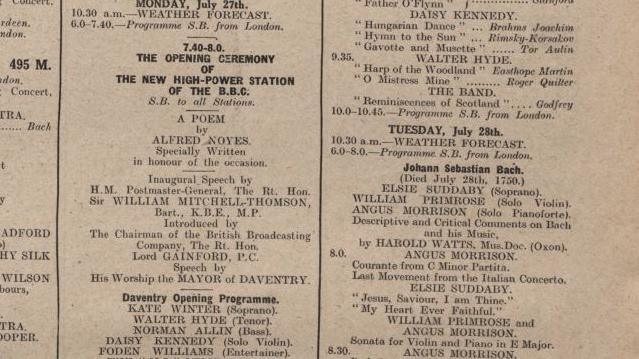
The Radio Times listed the order of events at the opening of the BBC site in Daventry
When was the BBC World Service first broadcast from Daventry?
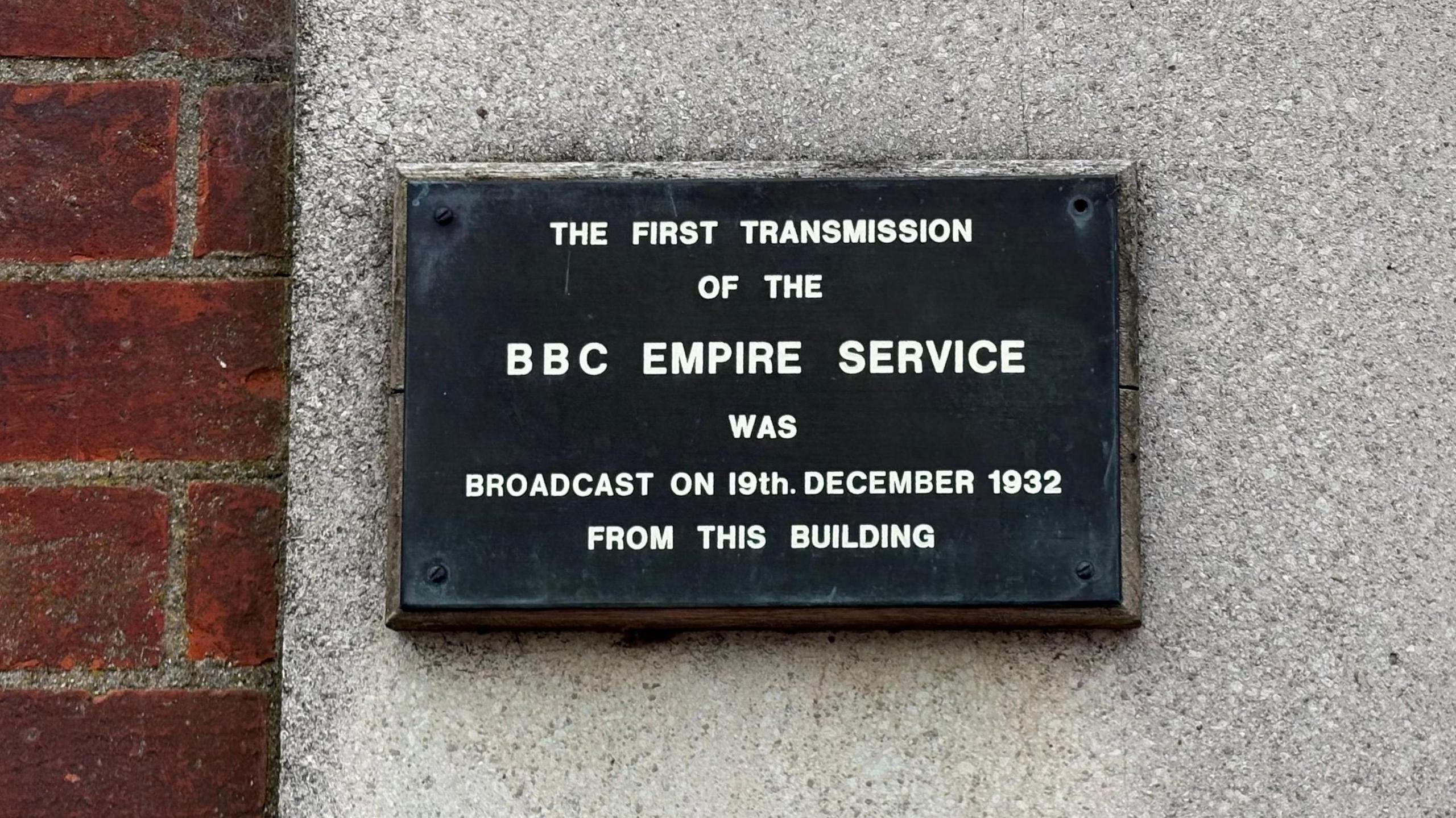
A plaque on the wall of a building on Borough Hill records the first Empire Service broadcast
The BBC governors had been considering the idea of broadcasting beyond the shores of the United Kingdom for some time.
The corporation's engineers knew that short wave radio signals could travel long distances by reflecting off the ionosphere, part of the Earth's atmosphere, making international broadcasting possible.
Finally, in 1932, they expanded the site at Daventry and installed two short wave transmitters to send out the Empire Service, as the World Service was then called, to four zones across the world.
In a speech to mark the opening on 19 December 1932, the BBC's director-general John Reith warned that the early programmes "will neither be very interesting nor very good", but he also said the launch of the service was "a significant occasion in the history of the British Empire".
He predicted that "broadcasting is a development with which the future must reckon and reckon seriously".
How big did the international operation at Borough Hill become?
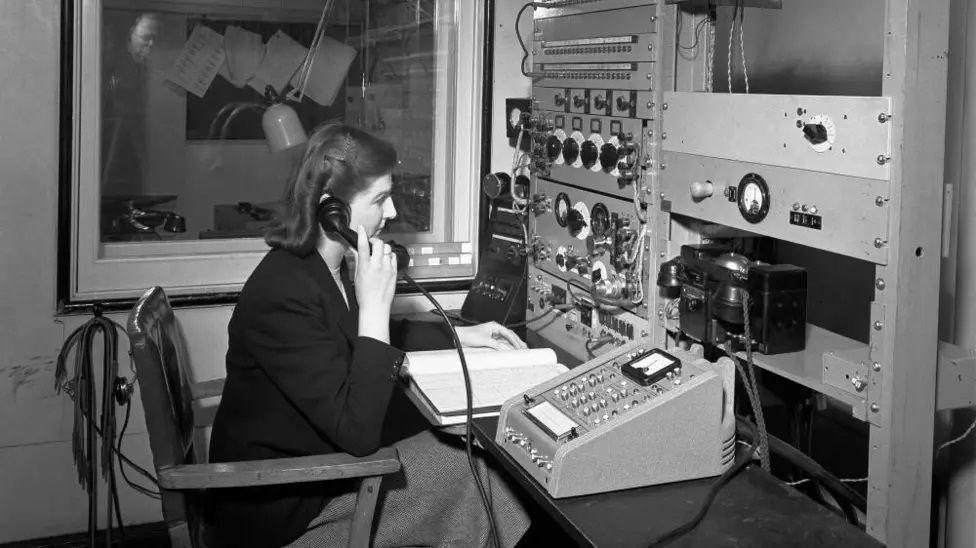
The technology at Borough Hill was the most advanced of its time
As time went on, more services were launched to different countries, and complicated schedules of frequency changes were needed to keep the radio stations on air as atmospheric conditions changed during the day.
Retired engineer John Barry recalls services being broadcast in about 38 languages in the 1970s.
He added that most of the languages were for eastern countries, as "in Asia, there are various vernaculars of Chinese, Indian, etcetera whereas, if you broadcast to the west, it was mainly Spanish".
What impact did the transmitting station have on Daventry?
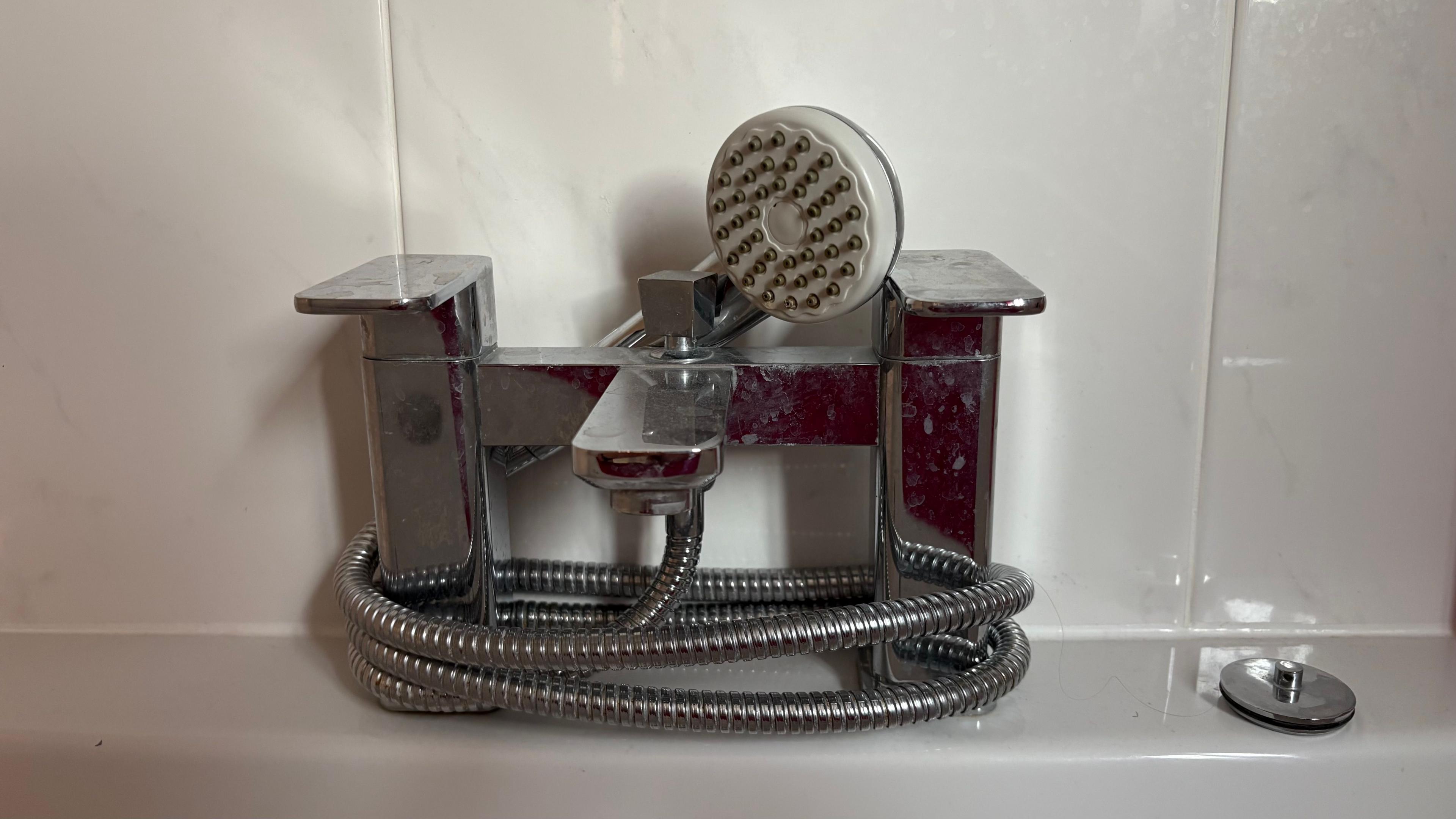
Taps in houses in Daventry used to pick up the World Service broadcasts, as did kettles, toasters and TV sets
People living in Daventry reported hearing programmes through metal items in their houses, such as taps and kettles, as well as chimneys and guttering.
Rod Viveash, another retired engineer, said other aspects of daily life were affected: "When TV started, [the radio signals] did cause a lot of interference with TV, so we went through a bit of a period being unpopular.
"When cars started to get in-built burglar alarms, you'd get the sound of the programme coming out of the car when you got into it."
BBC sports teams were created and a BBC club was opened in Sheaf Street.
A number of the men who came to work on Borough Hill ended up marrying local women.
Why did the BBC station at Borough Hill close?
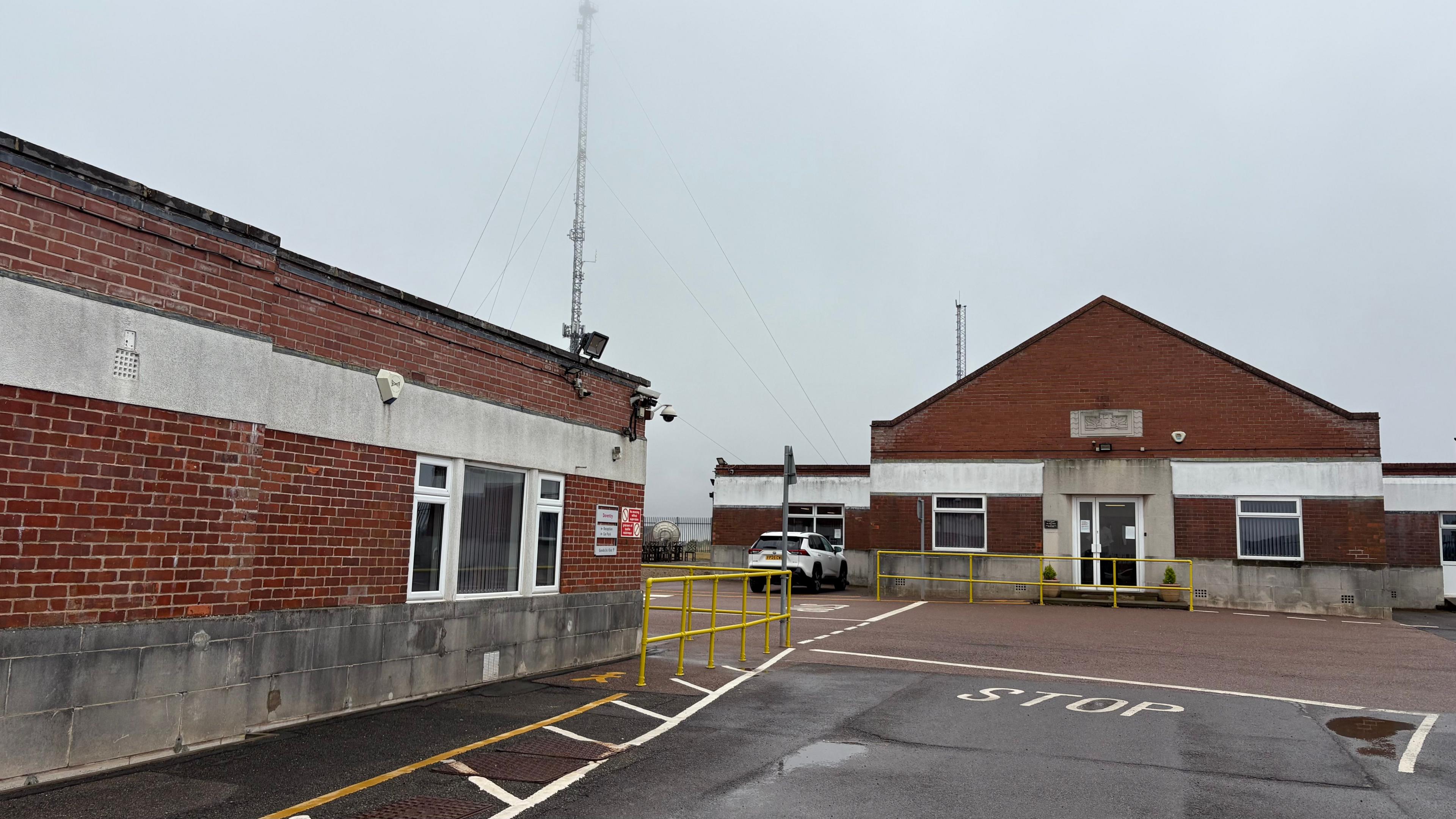
Many of the old buildings are still standing at the former BBC site
There were two main reasons why the BBC vacated the hill.
The Cold War, a period of tension between the USA and the Soviet Union , was over so the USA's international radio service, the Voice of America, moved out of the BBC's site at Woofferton in Shropshire.
World Service transmission could then be transferred from Daventry to Woofferton.
Also, modernising the Daventry facility would have involved constructing a large number of self-supporting towers on Borough Hill in place of masts held up by wires.
This would have been expensive, and may not have enhanced the Daventry landscape.
Bill Bird, who worked on the hill for nearly 50 years, was given the honour of switching off the last transmitter on 29 March 1992.
An exhibition is currently open at Daventry's museum telling the story of the BBC's time in the town.
Daventry calling... how the BBC spoke to the world
Get in touch
Do you have a story suggestion for Northamptonshire?
Follow Northamptonshire news on BBC Sounds, Facebook, external, Instagram, external and X, external.
- Published5 July
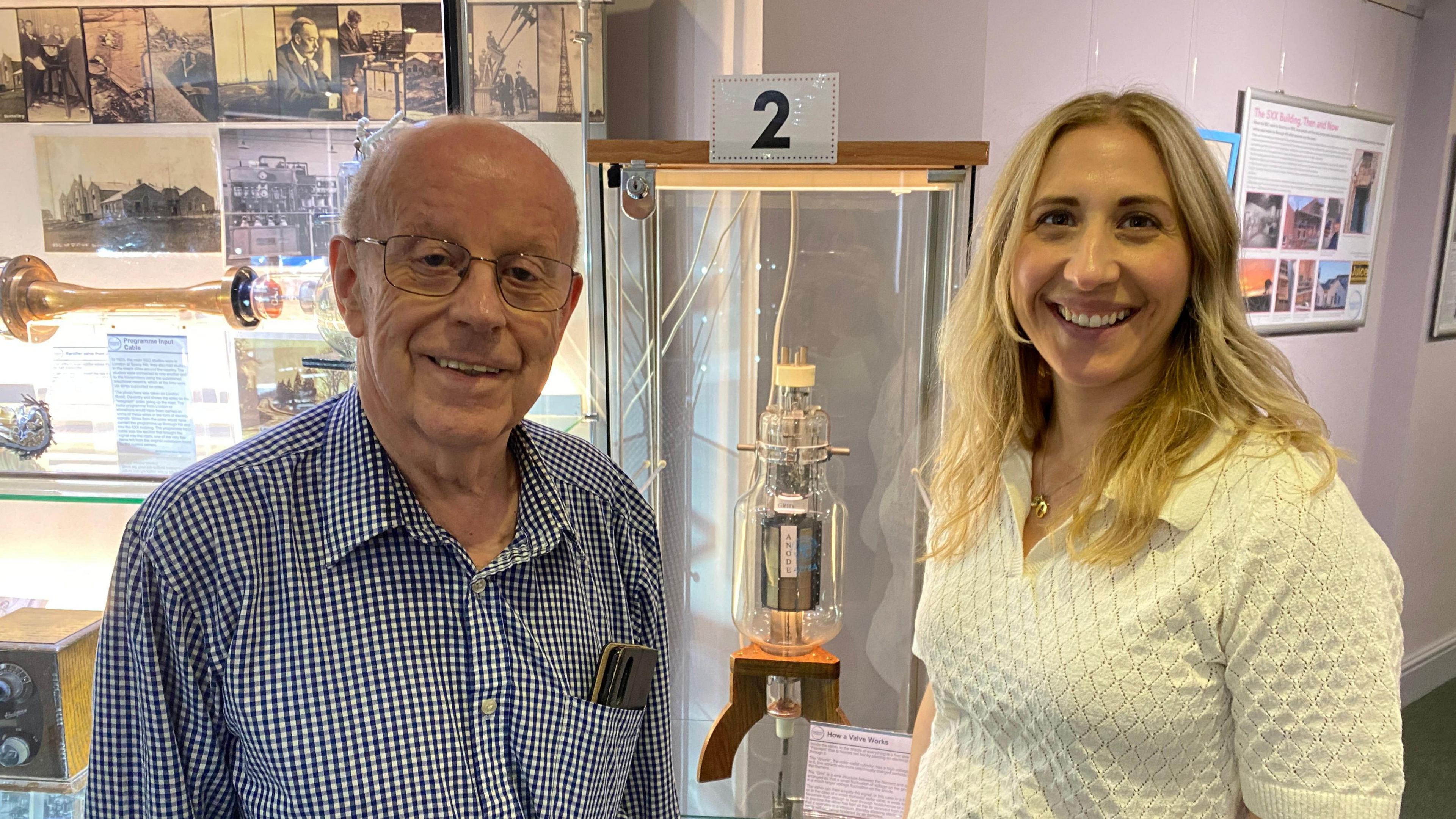
- Published18 October 2022
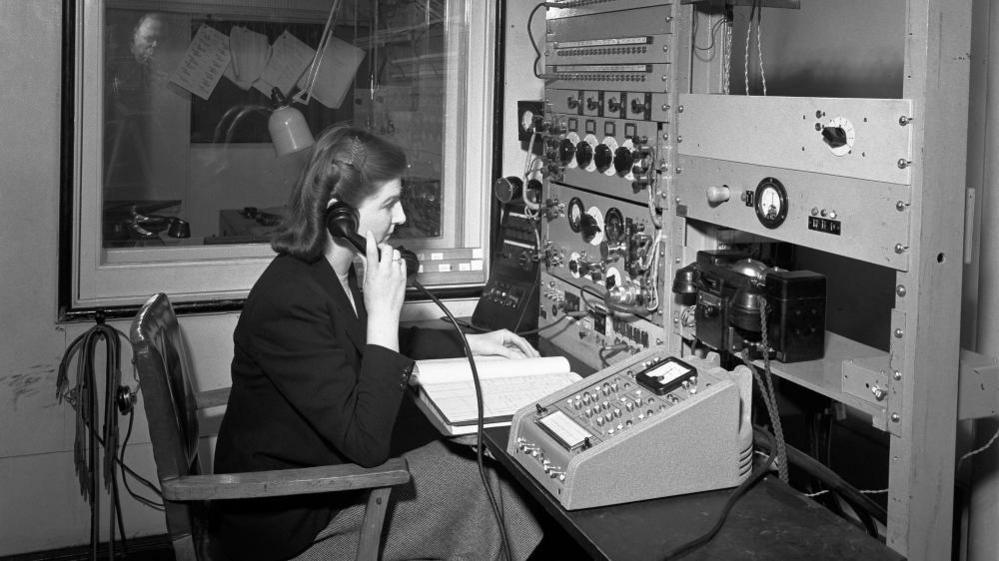
- Published5 September 2023
